Primordial visions of hope and horror
In an intimate presentation at the Hugo Michell Gallery, digital and multimodal artist Jess Taylor’s first commercial exhibition expresses a reaching for universal experience through representation of her inner personal fears and obsessions.

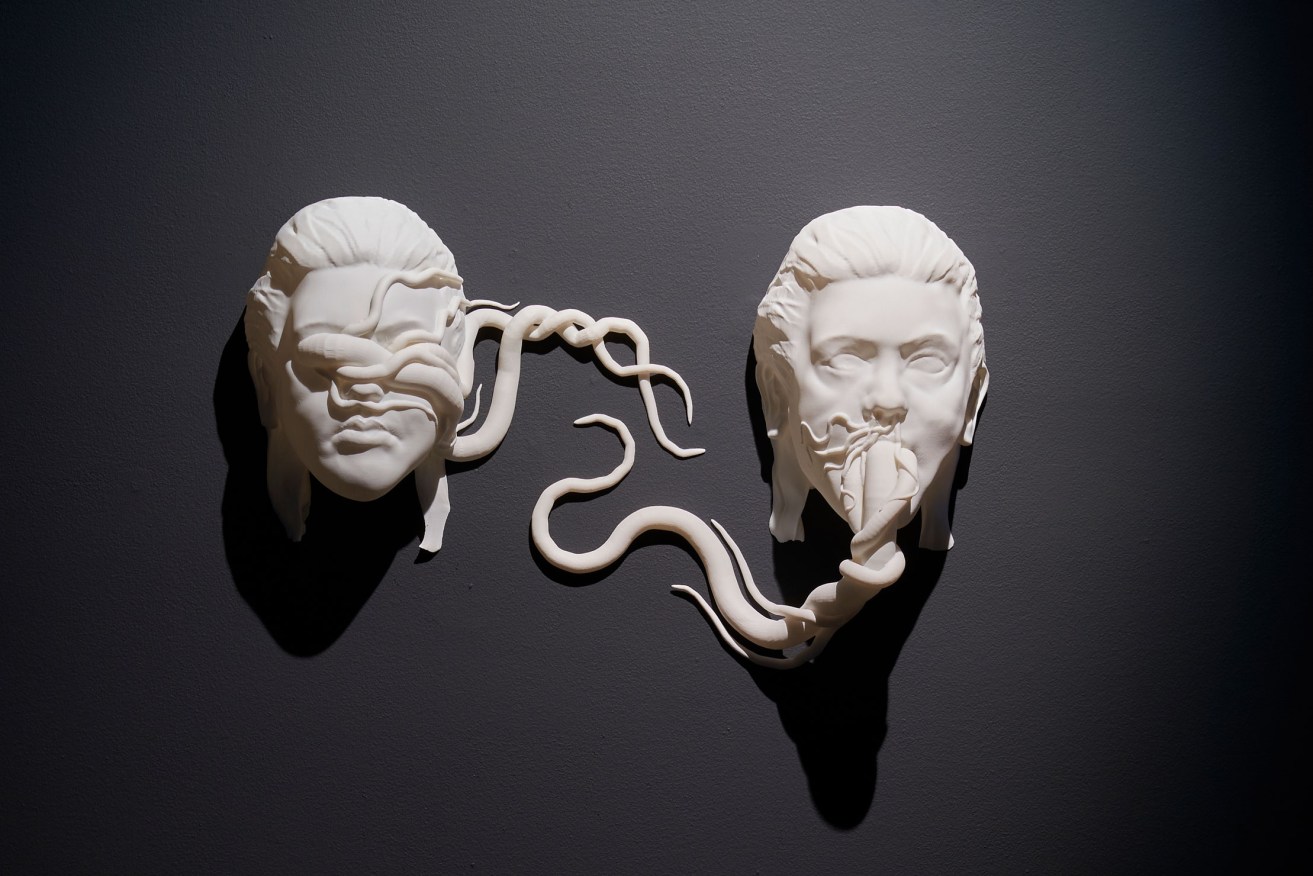
Jess Taylor, 'Now I Love You In The Dark', 2022, 3D printed resin and paint 37cm x 62cm x 18cm. Photo: Sam Roberts
Jess Taylor: Primordial
Hugo Michell Gallery
As artist Jess Taylor writes in her statement: “It’s human nature to want to see ourselves in the experiences of others… at our core we become great excavators, digging with eager fingers to pull out fragments of ourselves.”
Located in the project space at Hugo Michell Gallery on Portrush Road, Primordial features visceral and fascinating visual expressions of the artist’s innermost “fragments” of herself.
The exhibition marks Taylor’s return to a broader arts practice after her pregnancy, and among ideas explored through the works is a struggle with the nature of legacy and the fear of being forgotten. While she works in a variety of mediums – from photography to video, 3D installations and 3D printing – Primordial comprises exclusively 3D resin sculptures. The works feature Taylor’s digitally-modelled face and body, albeit deformed and twisted.
Examining the artist’s stark white, 3D-printed sculptures – cinematically lit upon a deep grey background – I couldn’t help but draw connections with the experience of wandering through vast halls of the Classical and Renaissance sculpture commonly found in Europe’s museums. Yet instead of seeing depictions of Perseus slaying Medusa, we view striking depictions of Taylor’s own likeness, distorted by gaping chasms of golden teeth, or by Matango-esque fungal growths bursting through eye sockets.
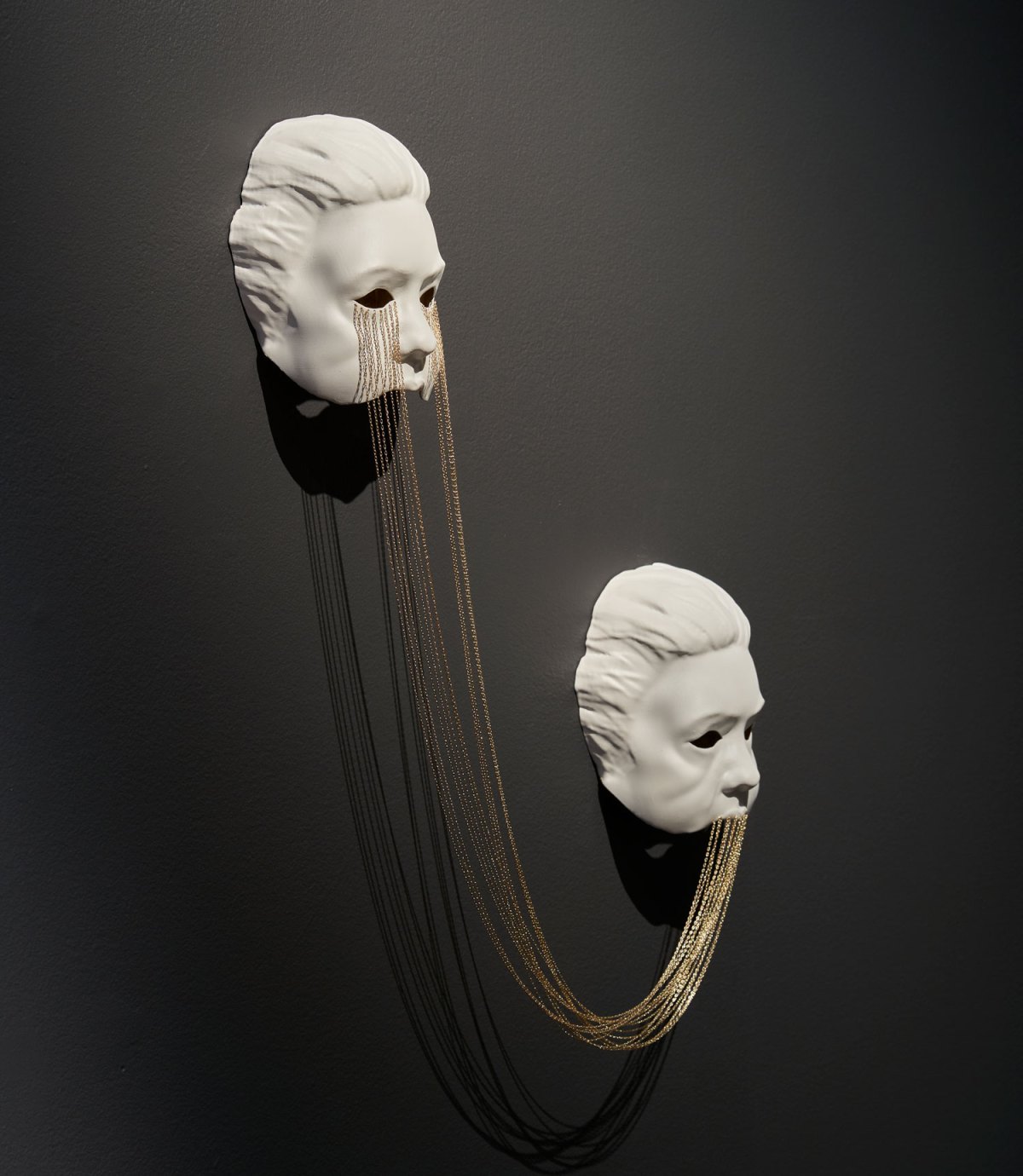
Jess Taylor, A Blade that doesn’t stop cutting, 2022, 3D printed resin, paint, chain, fixings, 60cm x 36cm x 20cm. Photo: Sam Roberts
There’s a certain glee with which Taylor experiments with deforming, twisting, and in some cases devouring, representations of her own body. Each work is placed on a polished timber shelf attached to the wall, and this gives the pieces an altar-like quality, where these sculptures – some adorned with gold – are sacred monuments to our obsessions, insecurities and idiosyncrasies. The sparsity of the presentation draws attention to the meticulous details that arise out of the digital sculpting process.
Taylor’s multimodal work is unified by the common use of technological processes that attempt to capture and replicate the real world digitally. All her works are to scale representations of her face or body, digitally modelled in computer software. She is keenly interested in the slippages and imperfections that arise through the limitations of such methods, and it’s intriguing to observe the visible signs of slight manufacturing imperfections on several of the works that would be unique to the so-called additive process of 3D printing.
The pure white colour of most of the works encourages a kind of “blank reading” but it also evokes Classical sculpture, adding to a sense of timelessness in these explorations of human nature and our struggles. As Taylor notes in her statement, “… we’re finding and clothing and carrying the same primordial hope and horror that lived in the first humans and will likely live in the last of the last”.
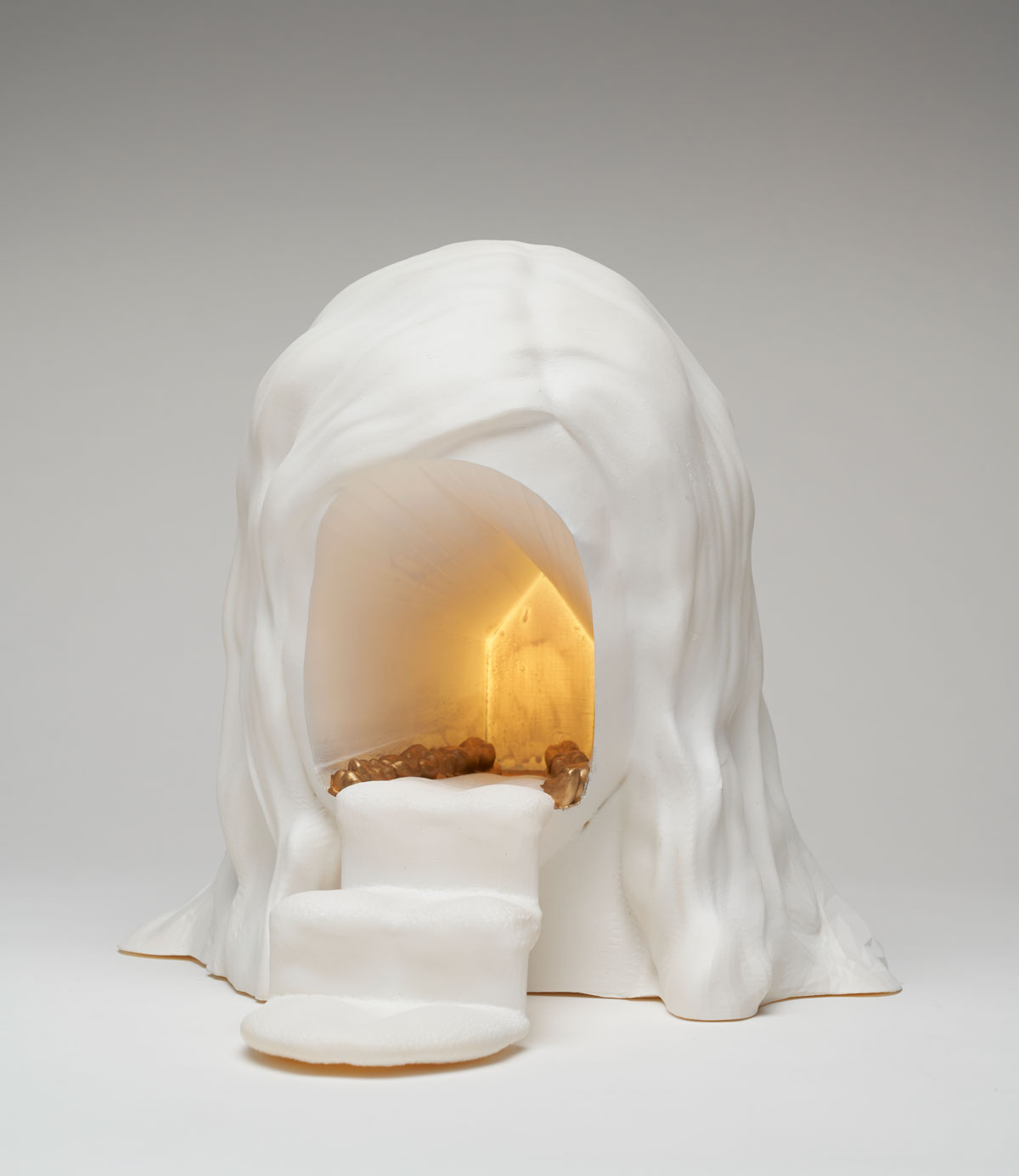
Jess Taylor, Dig Two Graves, 2022, 3D printed resin, paint, chain and shelf, 30cm x 34cm x 42cm. Photo: Sam Roberts
Motifs of consumption are evident throughout the exhibition, as are deep chasms that cut through Taylor’s face. Golden teeth adorn much of these gaps, such as in A Mirror that Suffers All on its Own and Dig Two Graves. In the latter work, the chasm has torn through the entirety of her mouth, eyes, nose and cheeks, and Taylor uses her tongue as a staircase, lined by golden teeth, which leads to a light emanating from her throat.
There’s an interchangeability in this body of work between hunger and desire, and the diversity in which this recurring motif is represented suggests different feelings and attitudes towards desire. Some of the works use the chasm lined with teeth as a portal into Taylor’s vulnerable self, surpassing her outward appearance; others, such as the titular work Primordial, features a cavity not unlike the mouths of the sandworms in Frank Herbert’s Dune, lined with hundreds of golden teeth presented in bizarre configurations for an unimaginably grisly process of consumption. This contrast is unique; sometimes the hunger is monstrous and all-consuming, sometimes it’s vulnerably beautiful.
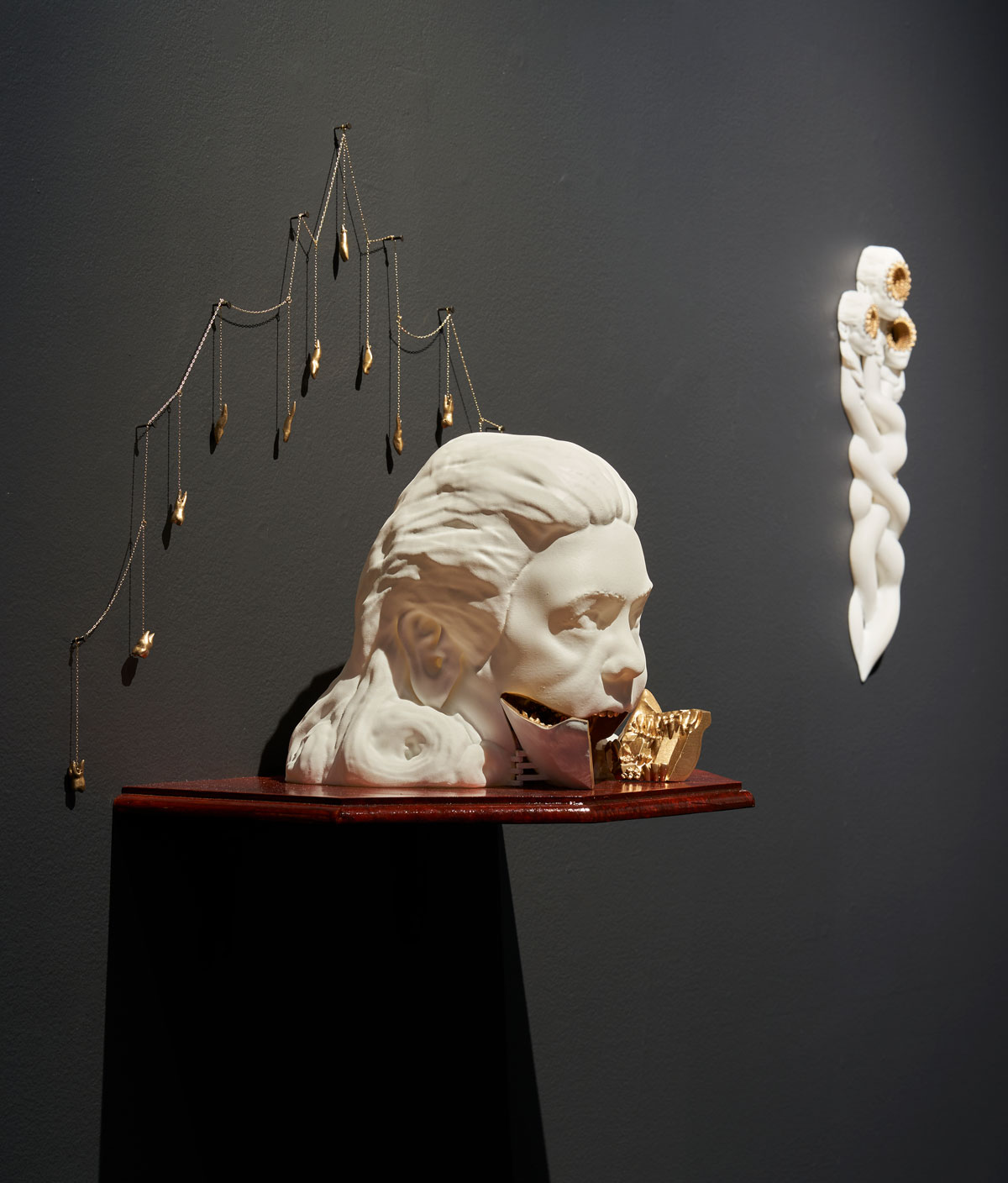
Jess Taylor’s Primordial at Hugo Michell Gallery. Photo: Sam Roberts
A sense of self-deprecating humour permeates the works in Primordial, highlighting the artist’s questions of the core of the exhibition. Shelob, for example – named after Tolkien’s giant mother spider known for eating her own children – depicts a kneeling human giant bearing the artist’s own face, but also eight menacing spider legs protruding from its back, devouring a model of the artist’s body.
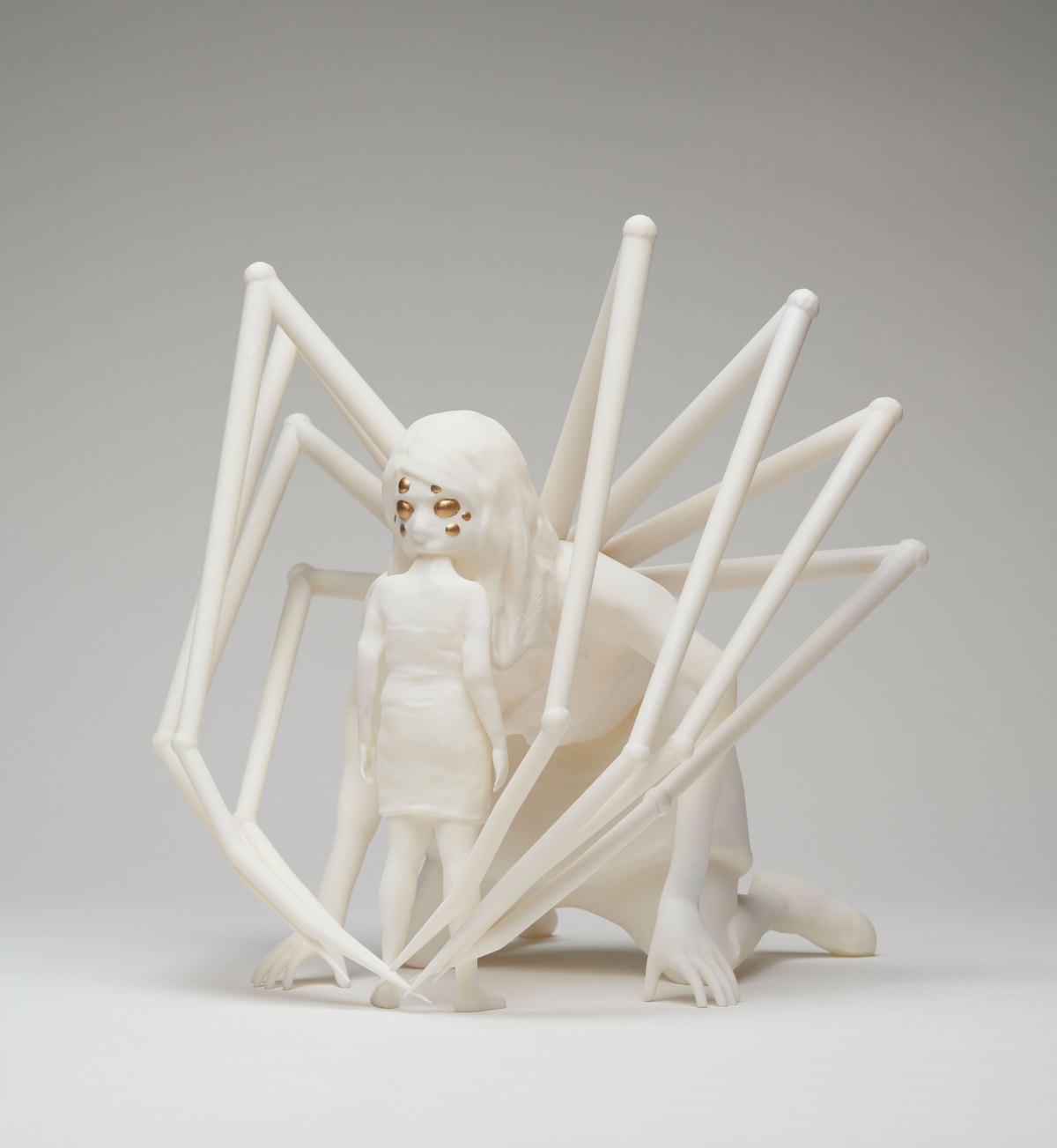
Jess Taylor, Shelob, 2022, 3D printed resin, paint, adhesive and shelf, 37cm x 42cm x 46cm. Photo: Sam Roberts
Primordial is a fascinating exhibition that seeks to explore the basic human need for understanding our obsessions and insecurities through the experiences of others.
It is a taste of the potential of digital creation methods made possible by today’s technology, and in Hugo Michell’s intimate project space we are treated to an idiosyncratic and gleefully gruesome representation of Taylor’s innermost fears and vulnerabilities. I’m eager to see how her work develops with the improvement of technology, and the other potential artistic applications of such methods.
Primordial is showing at Hugo Michell Gallery until April 2.
Gianluca Noble is the second recipient of the Helpmann Academy InReview Mentorship. He is working with experienced writers Murray Bramwell (theatre) and Jane Llewellyn (visual arts) to write a series of articles for publication in InReview.




